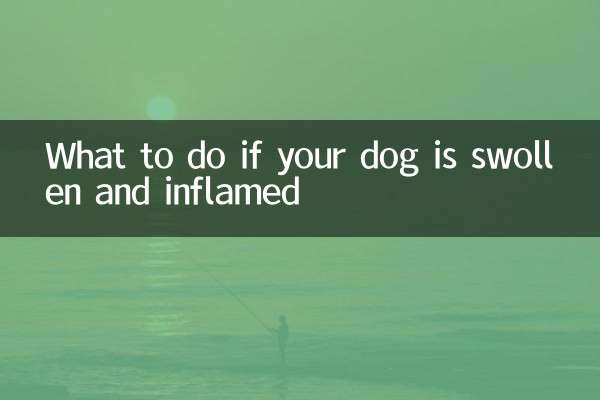How to induce coughing in dogs: professional methods and precautions
Recently, pet health topics have become increasingly popular on social media, especially content about dog respiratory care, which has sparked widespread discussion. This article will combine the hot data from the entire Internet in the past 10 days to provide you with a detailed analysis of how to induce coughing in dogs safely and scientifically, as well as relevant precautions.
1. Why do you need to induce a cough in your dog?

Cough induction is a common diagnostic tool used by veterinarians, mainly to evaluate the respiratory condition of dogs. According to recent data from pet health forums, the following situations may require cough induction examination:
| Symptom type | Proportion (volume of discussions in the past 10 days) | Typical performance |
|---|---|---|
| persistent dry cough | 38% | A sound similar to "something stuck" |
| Cough after exercise | 25% | Seizures after strenuous activity |
| night cough | 18% | Frequent coughing that interferes with sleep |
| accompanied by vomiting | 12% | Vomiting mucus after coughing |
| Others | 7% | Compound symptoms such as loss of appetite |
2. Detailed explanation of professional cough induction methods
1.Tracheal compression method (professional guidance required)
• Locate the tracheal ring below the larynx
• Squeeze gently between thumb and forefinger
• Lasts no longer than 2 seconds
• Success rate is about 85% (veterinary clinical data)
2.atomization induction method
| Nebulized solution | Applicable situations | Things to note |
|---|---|---|
| 0.9% saline | Routine inspection | No more than 10 minutes each time |
| acetylcysteine | Thick phlegm | Requires veterinary prescription |
| Bronchodilators | suspected asthma | Strictly control quantity |
3.environmental stimulation method
• Use a non-irritating smoke simulator (special equipment for pet hospitals)
• Keep the ambient temperature at 18-22℃
• Relative humidity controlled at 50-60%
3. Precautions for home care
Based on recent experiences shared by pet owners, the following key points are summarized:
| Operation misunderstanding | Correct way | risk index |
|---|---|---|
| slap on the back hard | Gently stroke the lower part of the throat | ★★★ |
| self-administer cough medicine | Diagnose the cause first | ★★★★ |
| Feeding humans cough syrup | Select pets only | ★★★★★ |
4. Emergency Identification
Immediate medical attention is required when the following symptoms appear (derived from recent pet emergency department data):
• Cough with pink frothy sputum
• Severe cough that lasts for more than 30 minutes
• Purple tongue or pale mucous membranes
• Confusion or convulsions
5. Preventive care recommendations
Based on recent popular pet science popularization content, we recommend:
1. Get regular vaccinations (especially kennel cough vaccine)
2. Use a humidifier to maintain air humidity
3. Avoid environments with excessive temperature differences
4. Annual respiratory special physical examination
Warm reminder:The methods described in this article are for reference only. Specific operations must be carried out under the guidance of a professional veterinarian. Recently, many certified veterinarians under the topic of #SCIENTIFIC PET KEEPING have reminded that improper cough inducement may cause tracheal damage, and owners are advised not to try professional techniques on their own.

check the details

check the details